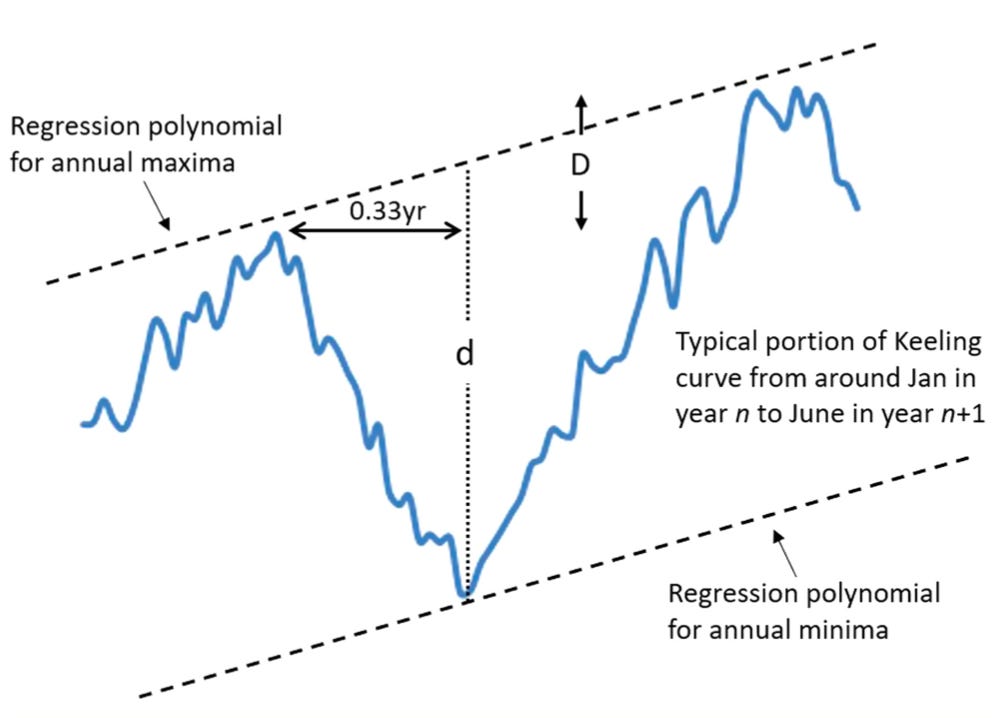Natural CO2 sequestration peaked in 2008 and is now declining
I quite often get the comment “CO2 is plant food” as if polluting the atmosphere is a good thing. The obvious repost is that CO2 may be good for plants, but the climate changes it brings are not.
In a paper published recently by the Royal Meteorological Society by James and Samuel Curran, they update analysis they carried out back in 2016 using the CO2 concentration data to 2024. They find that natural sequestration of CO2 peaked in 2008 and is now in accelerating decline.
The famous Keeling curve shows the CO2 concentration of the atmosphere since 1958. Each year the curve follows a saw tooth pattern through the seasons. The low point is reached in October when the plant growing season finishes in the northern hemisphere, and the high point is reached in March before it starts up again. The southern hemisphere has little impact due to the low land concentration, and ocean sequestration is largely stable throughout the year.
The overall upward trend is due to human emissions which as can clearly be seen has steadily accelerated as emissions increase each year.
The Curran’s analysis examines the shape of the maximum and minimum points to determine the change in the intra-annual drop over time, a measure of the amount of sequestration that plant growth has provided.
In the 1960s and 70s, the increase in sequestration was strong. Plants do indeed respond to increased CO2 availability for photosynthesis. However this growth peters out and peaks in 2008 and is now in decline.
Although CO2 is a plant fertiliser which encourages stronger growth, it is not the only required ingredient. The availability of natural soil nutrients and water may now be imposing constraints. Progressive climate change also damages vegetative growth, such as wildfires, particularly in the Northern Hemisphere summer, heat waves, droughts, floods, storms and the spread of new pests and diseases (e.g. bark beetle in the US). Permafrost melt in the northern summer may also be a factor.
The analysis shows that natural sequestration is now in decline. Atmospheric CO2 concentration will now rise more rapidly than previously in proportion to annual global CO2 emissions. The current rate of increase of around +2.5ppm per year would have been around +1.9ppm if natural sequestration had not begun to fail.
Emissions need to drop by 0.3% per year just to match this decline in sequestration. They are currently still rising at 1.2%. Ambitious nature based solutions will have to make up this deficit before having any impact on human emissions. IPCC scenarios and NDCs that rely upon stable natural sequestration need to be re-thought.
In the meantime, CO2 accumulation will accelerate further and the climate changes and biosphere impacts that brings will also accelerate.
Paper: https://rmets.onlinelibrary.wiley.com/doi/10.1002/wea.7668







NOAA has just published its 2024 Trends in Atmospheric Carbon Dioxide report showing a record high growth of 3.75ppm.
https://gml.noaa.gov/ccgg/trends/gl_gr.html